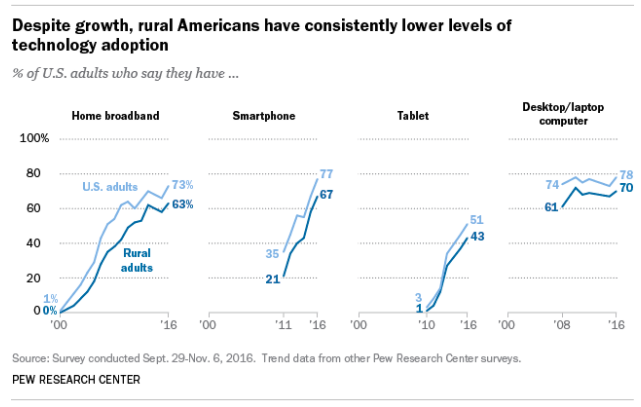By: Dr. W. Ian O’Byrne, College of Charleston
The world has not seen a school shutdown on this scale before. According to UNESCO, roughly nine out of ten schoolchildren are out of school worldwide. As many school districts shut their physical doors for months, or the remainder of the year, there is an understanding that these closures are a serious threat to children’s academic progress, safety and social lives.
To alleviate these concerns, there is hope that shifting to online learning will provide opportunities to lessen these losses and support learners. The challenge is not all schools, educators, parents, or children are equipped to effectively learn in digital spaces. Many of these challenges disproportionately impact low-income students and those with special needs.
Research suggests that 4 in 10 U.S. teens say they haven’t attended a single online or virtual class since schools closed.
With many millions of Americans working or attending virtual school from home during the coronavirus pandemic, the longstanding gap between those who have reliable, affordable internet and those who do not has never been so clear. Much has been made about the efforts to make sure students have the devices and internet access they need for online education. Yet in actuality, signing up for free, or low cost internet service is difficult, leading to students sitting in school or library parking lots to connect online.
The vast majority of households with children have broadband internet, but there are still big disparities by income, race and the education level of parents. Many families are likely to rely on smartphones for Internet access and children in those households may not be able to use learning software that requires a tablet or computer. It is not unusual for students to try to complete schoolwork on a single cellphone. Educators need to be careful about expectations that all students can go completely online.
Digital Divide
There are many ways to define “digital divide” as it relates to technology usage and equality, and it also has very specific meanings in the United States, as opposed to the remainder of the planet. Digital divide refers to the growing gap between the rich and poor as it relates to Internet access. The rich and educated are still more likely than others to have good access to digital resources. When it comes to education, the digital divide has especially far-reaching consequences.
Many of the reasons for the gap in the digital divide focus on access, education, income, as well as a number of demographic and socio-economic characteristics. To address the challenges of a digital divide, it is often helpful to think about the connections involved as we connect to the Internet.
- What kind of technology? To what does the subject connect: fixed or mobile, Internet or telephone, digital TV, broadband, etc.
- Who is the subject? Who is the subject that connects: individuals, organizations, enterprises, schools, hospitals, countries, etc.
- Which attributes matter? Which characteristics or attributes are distinguished to describe the divide: income, education, age, geographic location, motivation, reason not to use, etc.
- How to connect? How sophisticated is the usage: mere access, retrieval, interactivity, intensive and extensive in usage, innovative contributions, etc.
Due to the growing amount of information on the Internet and people’s increasing dependence on information, internet skills should be considered a vital resource in contemporary society. Complicating these issues of connection, are the problems that educators, parents, and students have with moving learning environments to online spaces. Recreating a classroom online is a logistical challenge that comes with a learning curve for students, teachers and parents. For children in low-income school districts, inadequate access to technology can hinder them from learning the tech skills that are crucial to success in today’s economy.
Rural Connections
Urban and rural areas in the U.S. feel the effects of the digital divide more than their suburban counterparts, with most of this stratification correlating with socioeconomic status and ethnicity. Overall, geographic disparity of income in the United States is best explained by first dividing the nation into regions and then further into urban and rural areas. This impacts youth as those raised in better socioeconomic conditions are more likely to have computers in their homes, attend better schools, and have more qualified teachers with better computer skills. The digital divide is exacerbated when America is split into areas of concentrated advantage juxtaposed with areas of concentrated disadvantage.
“Rural” is generally defined as a geographic area that is located outside towns and cities. Rural areas also contain many areas of inequalities of opportunity, including healthcare, education, and jobs. Examinations of these inequalities in the U.S., found the largest disparity in the South, and the least amount of inequality occurring in the West.
Rural areas have an additional obstacle when it comes to digital access where high-speed internet can be sparse and expensive, or sometimes not even an option at all. In many rural areas, the only Internet options are near-obsolete DSL, satellite, or even dial-up. These internet access methods are often more costly, despite being less reliable and more easily affected by poor weather or infrastructure.
Research suggests that even as technology becomes more ubiquitous, rural Americans remain less likely than urban and suburban Americans to have and use various digital technologies. This data suggests that rural users are less likely to have home broadband. Rural users increasingly use mobile devices, but rarely own a desktop or laptop, and even more infrequently own multiple devices. Lastly, this research suggests that rural Americans go online less frequently than their urban and suburban counterparts.

Maintaining Rural Connections
Much of the mythology of rural America emphasizes the challenges and hardships that exist, even as we recognize the lack of educational and economic opportunity for residents. As we increasingly move to a globally connected society, there is a need to consider whether we are unfairly hindering rural youth without providing them with the access, skills, and knowledge necessary to survive and compete in today’s economy.
A review of digital learning strategies for rural America (PDF) suggests rural school districts face many challenges that are substantively different from urban and suburban districts. These include:
- Decline in enrollment,
- Lack of computer and Internet access,
- Lack of high quality professional learning,
- Shortage of teachers,
- Inequitable course access,
- Gap in college and career achievement,
- Increase in underserved populations, and
- Lack of funding and resources.
The report suggests digital learning initiatives, directed by the state, or local, district/school programs can help alleviate some of these challenges. Specifically, they give guidance on four broad categories of online and blended learning options that can help rural schools and students. These include state virtual schools providing supplemental online courses and other services, course access programs, fully online schools, and consortium or regional service agencies.
It should be noted that there is also a need for better access to broadband Internet in rural areas. Perhaps there is also a need for improved state and regional policies that can improve the lives of digitally literate rural youth. Despite these challenges and opportunities, many youth are currently being left behind as our schools move online.
To address these concerns in real-time, educators need to once again remember that not all students may be able to access and connect to digital learning spaces. A certain amount of creativity is needed as you make these transitions. Before you worry about specific tools to use, or automatically jump to video conferencing because you think it is expected, Stephen Merrill suggests the following mindsets:
- Expect trial..and plenty of error – There will be mistakes made. Make peace with it.
- Acknowledge the extraordinary – Focus on enrichment and meaningful activities.
- Reduce the workload (for yourself and your students) – Focus on “need to know” and not “nice to know” in your courses.
- No person is an island – We’re all in this together. Keep in contact.
- Everyone thinks they can’t, before they can – You know how to teach. You will figure this out in time.
- Mind the gap – Your work will be hard, but there are students facing more severe challenges.
Stay Connected
As our schools, communities, and systems close down, we cannot assume that all learners will be able to engage and connect online. We need to be intentional in uses of technology, and push for more informed, thoughtful instructional uses of technology. We need to advocate for privacy, security, and more informed uses of our data in these spaces. There is a need to educate, empower, and advocate for ourselves and our students.
Together we can use this as an opportunity to forge a future for all that is more accessible and approachable. I also examine these questions from a parental lens at the Screentime Research Group and on my blog. Lastly, my weekly newsletter provides a weekly glimpse of the changing landscape in a rapidly changing, technological society. Together we can use these experiences to identify the broken parts of our system and hopefully build new ones to support all learners.
About the Author

W. Ian O’Byrne, PhD is an assistant professor of literacy education at the College of Charleston in South Carolina. His research focuses on the dispositions and literacy practices of individuals as they read, write, and communicate in online and/or hybrid spaces. O’Byrne is the author of many journal articles and book chapters focusing on initiatives ranging from online and hybrid coursework, integrating technology in the classroom, ePortfolio systems, and supporting marginalized students in literacy practices. Ian is a former middle school and high school English Language Arts teacher. He can be found on Twitter (@wiobyrne) and his work can be found on his website (https://wiobyrne.com/). His weekly newsletter (https://digitallyliterate.net/) focuses on the intersections between technology, education, and literacy.
Assistant Professor, Department of Teacher Education, College of Charleston
